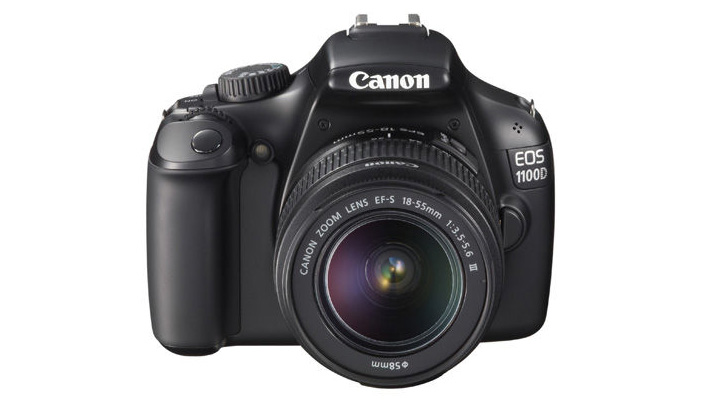Why you can trust TechRadar
Canon EOS 1100D: Features
Despite it's similar looks and name, pretty much every feature on the spec sheet has been upgraded for the Canon 1100D compared with the EOS 1000D. A new 12Mp CMOS sensor with a sensitivity range from ISO 100 to ISO 6400 provides a step up in resolution and flexibility, enabling larger prints to be made and shots to be taken in lower lighting conditions than the preceding model.
As far as image quality is concerned it doesn't end there. The EOS 1100D also sports Canon's DIGIC 4 processing chip, which can produce 14bit raw files and movie mode, both of which are absent from the Canon 1000D.
High definition (720p) footage can be recorded by the Canon 1100D at up to 30fps (frames per second), which should be perfect for those wishing to experiment with recording video with a digital SLR.
Continuous shooting is also possible, at three frames per second, which is fairly typical of a camera at this level. Exposure metering and autofocus have also been overhauled. The 7-point autofocus system of old has made way for the now familiar 9-point array of focusing points found on models higher up the pecking order.
Canon's iFCL 63-zone metering system has also been implemented, which is the same unit found in recently released higher specified models. This system is sensitive to colour as well as subject brightness, which is claimed to produce more accurate automatic exposures in a wider range of conditions than the previous metering system. However, it is known to be prone to giving too much emphasis to the subject under the active AF point.
Superficially, the most obvious upgrade since the EOS 1000D is the larger 2.7inch screen, which makes using live view and reviewing images much more pleasant than on its predecessor. The screen has a resolution of 230,000 dots, which is pretty low by modern standards, but is acceptable in an entry-level model.
To aid ease of use, especially for those with a phobia of instruction manuals, information on what each setting does is displayed clearly on the screen as settings are changed. Information settings can also be accessed at any time by pressing the button marked with a Q.
The usual range of automatic scene programs are available such as Portrait, Landscape, Sports, etcetera, but with a twist. Canon has added Basic+ and it allows users to set certain parameters in each of the auto scene modes. For example, in the Portrait mode you can take control of the Picture Style and White Balance settings used. This should be very useful for those without the confidence to move completely off auto, but who still wish to take some control of the camera.
A Creative Auto Mode is also included, providing even more control, whilst retaining the safety of automatic operation, in a similar way that armbands are used for those learning how to swim. It's basically a hand-holding form of aperture priority mode as the user can select whether they wish to have a blurred background, or everything in focus and the camera will select the best setting it can for the conditions.
Another useful addition that was first seen on the EOS 60D, is the ability to rate captured images from 0-5 in-camera. These ratings are carried with the EXIF data so that they can be used to help identify favourite images once they have been downloaded to the computer.
Current page: Canon EOS 1100D: Features
Prev Page Canon EOS 1100D: Overview Next Page Canon EOS 1100D: Build quality and handling
Apple just confirmed its annual Black Friday shopping event, and it's all about gift cards

Would you pay $2000 for the most extravagant laptop of 2024? GPD's double foldable convertible laptop goes on sale — with world's fastest mobile CPU and even an OCuLink connector

I cheated on my wired headphones with these JLab Bluetooth earbuds, and they're a steal for Black Friday
